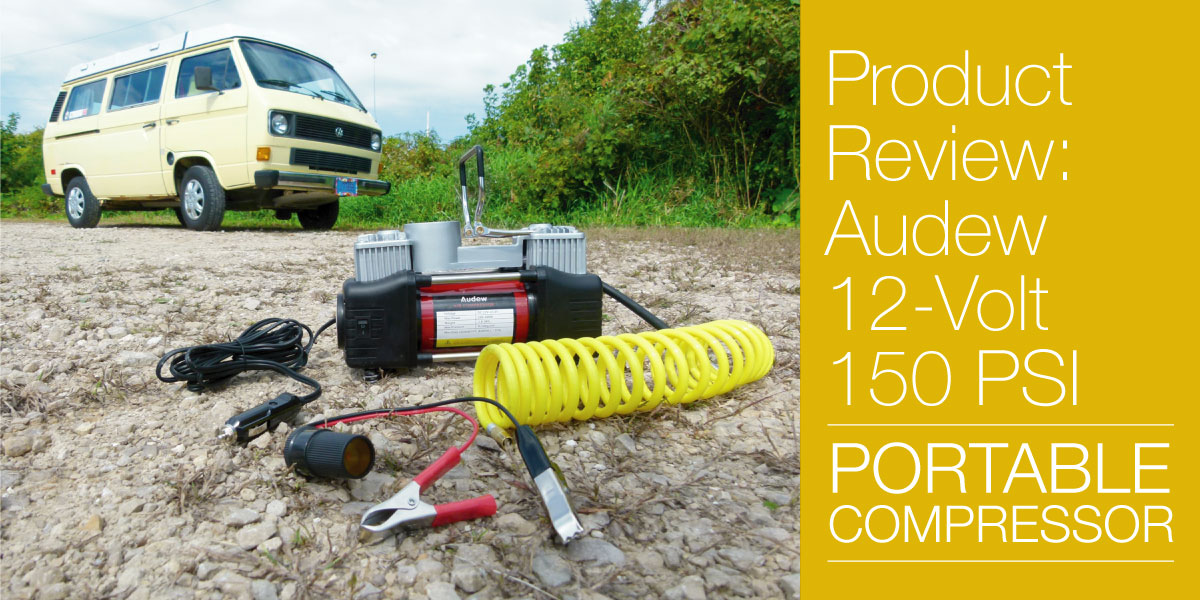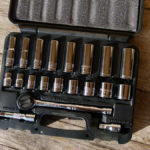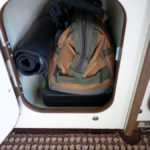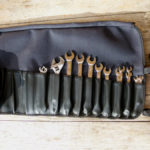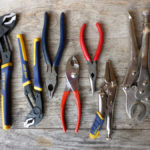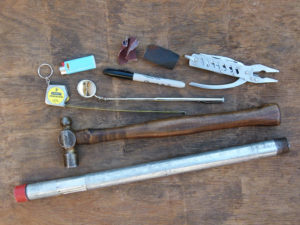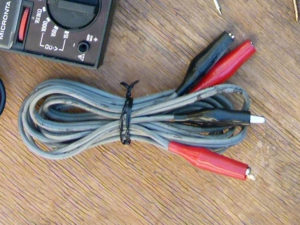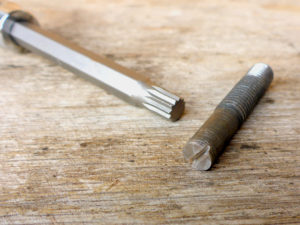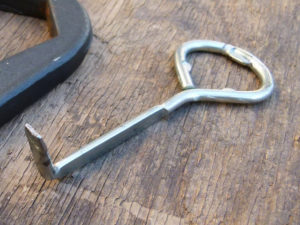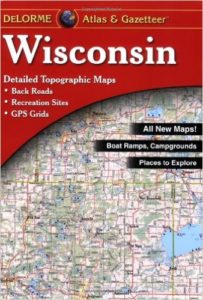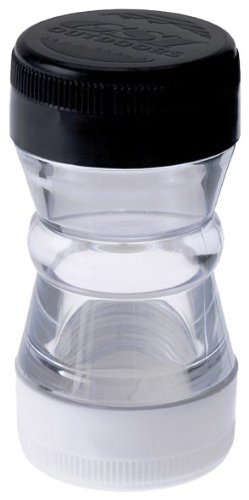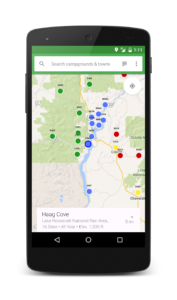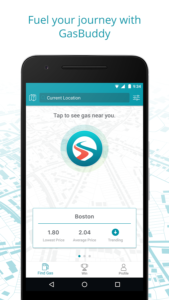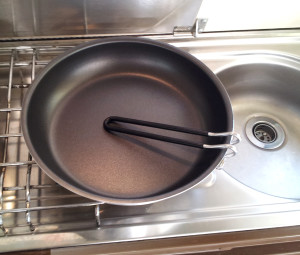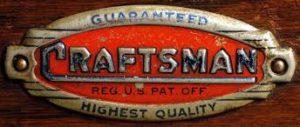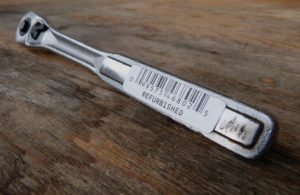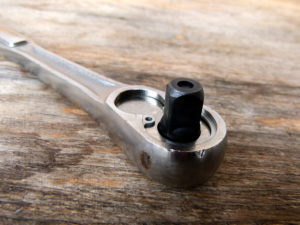A lightweight, compact 12-volt air compressor for refilling tires and other inflatable equipment
DISCLOSURE
Camp Westfalia was provided with a product sample at no cost in return for an authentic review of this product. All thoughts and opinions expressed here are those of Camp Westfalia, and are not otherwise influenced by the manufacturer or its affiliates.
Specifications
- Operating Voltage: DC 12V
- Max Power: 250W-300W
- Air Flow: 60L/min
- Maximum Pressure: 100 PSI
- Size: Approx. 9.6 x 3.75 x 6.25″ (24.5 x 9.5 x 16cm)
- Weight: 6.4 lbs, 2.8kg-3kg
Vanagon and other van-travellers tend to wander off the beaten path, often finding themselves far from major highways, and perhaps beyond reliable phone reception. A flat or leaking tire on the interstate is a big inconvenience, but the same flat tire on a remote byway can be downright dangerous for you and your family. Self-reliance is crucial, and a portable compressor like this can be a real trip saver.
This portable automotive air compressor is lightweight and surprisingly compact. But can it get the job done?
First Impressions
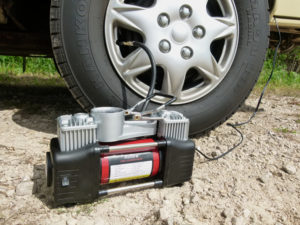 When I first unboxed the TOPDC Double-Cylinder Air Compressor, I was a bit surprised by it’s small size and light weight. It seemed solid enough, but I wondered if such a diminutive device could properly inflate the larger, light-truck tires used on most Vanagons.
When I first unboxed the TOPDC Double-Cylinder Air Compressor, I was a bit surprised by it’s small size and light weight. It seemed solid enough, but I wondered if such a diminutive device could properly inflate the larger, light-truck tires used on most Vanagons.
Still, its cast alloy cylinder heads, main motor housing, and reinforced case all seemed to make for a pretty durable little unit.
A folding top handle makes it easy to carry, and to lift in and out of the Vanagon bench seat. There’s an LED work light integrated into one end of the case, controlled by a dedicated switch, to shed some light on nighttime flats or other breakdowns.
Unlike most other compressors of this size and price, this TOPDC Air Compressor model features twin cylinders, which evidently makes for higher pressures, faster inflation times, lower noise, and less vibration.
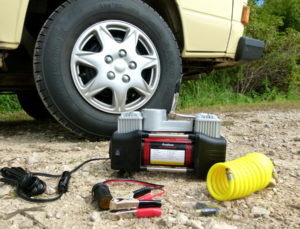 The primary power cord plugs into a cigarette-lighter socket. Also included is an adaptor to run the compressor directly off your main starting or auxiliary battery, a 10-foot coiled extension air hose, and three nozzle adaptors for inflating air mattresses, soccer balls, pool toys, etc..
The primary power cord plugs into a cigarette-lighter socket. Also included is an adaptor to run the compressor directly off your main starting or auxiliary battery, a 10-foot coiled extension air hose, and three nozzle adaptors for inflating air mattresses, soccer balls, pool toys, etc..
Everything tucks neatly away inside the included zipper bag, to keep all the loose bits clean, undamaged, and organized.
Get the TOPDC Double-Cylinder Air Compressor here
On The Road or In Camp
To simulate a flat tire, I pounded a 2-inch roofing nail through the sidewall of a low-miles Hankook. Just kidding. Actually, I just unthreaded the valve stem of my Vanagon spare and allowed it to completely deflate while I ate lunch.
 For maximum power during my test, I connected the TOPDC Double-Cylinder Air Compressor directly to my starting battery using the included clips. Both the primary air hose and the coiled extension use screw-on connections, so you don’t need to hold the hose onto the tire’s valve stem; just flip the switch and stand by.
For maximum power during my test, I connected the TOPDC Double-Cylinder Air Compressor directly to my starting battery using the included clips. Both the primary air hose and the coiled extension use screw-on connections, so you don’t need to hold the hose onto the tire’s valve stem; just flip the switch and stand by.
Small compressors like this are generally able to provide high pressure but at low volume, so they tend to be slow. While the little unit chugged away, I wondered how long it would take to completely fill the rather large Vanagon tire:
- At 2 minutes, it had inflated the tire to 25 PSI.
- At 4 minutes, it had inflated the tire to 35 PSI.
- At 6 minutes, it had inflated the tire to 48 PSI
All in all, pretty speedy.
NOTE: flat tires should always be inflated while bearing NO VEHICLE WEIGHT, to ensure the tire bead is securely seated on the rim, and so that the compressor is not over-working to lift the vehicle. Either jack the vehicle up so that the wheel is clear of the ground, or remove the wheel from the van entirely. Tires that are only a bit underinflated can be topped up while mounted.
Using the 8-foot power cord and extension hose, all four Vanagon wheels are easily reached from the dashboard power socket.
The included instructions warn users to allow the compressor to cool off after 10-15 minute’s use, but after completely filling my tire, I found the cylinder heads and motor casing only very warm to the touch. If inflating something larger like an air mattress, do it in 10-minute intervals to prevent overheating.
When compared to my shop-grade handheld pressure gauge, the compressor’s built-in gauge was accurate to within 1 PSI.
Finally …
 Considering its compact size, weight, and versatility for other tasks, there’s no reason not to carry one of these as part of your emergency tool kit. The TOPDC Double-Cylinder Air Compressor fits neatly in the storage space beneath the Vanagon bench seat, and gives us the assurance and peace of mind when travelling in the backcountry
Considering its compact size, weight, and versatility for other tasks, there’s no reason not to carry one of these as part of your emergency tool kit. The TOPDC Double-Cylinder Air Compressor fits neatly in the storage space beneath the Vanagon bench seat, and gives us the assurance and peace of mind when travelling in the backcountry
Hits: quality construction, compact & lightweight design, fast inflation, long cord and hose for extended reach, included carrying bag & accessories
Misses: slightly more spendy than lesser portable automotive compressors

